The Sciences
Immortal Jellyfish; Is life without death achievable for humans?
To overcome death, start living again from the beginning. If the life secret of immortal Jellyfish, which has made the concepts of immortality and rebirth almost a reality, can’t human beings one day put dust in the eyes of death?
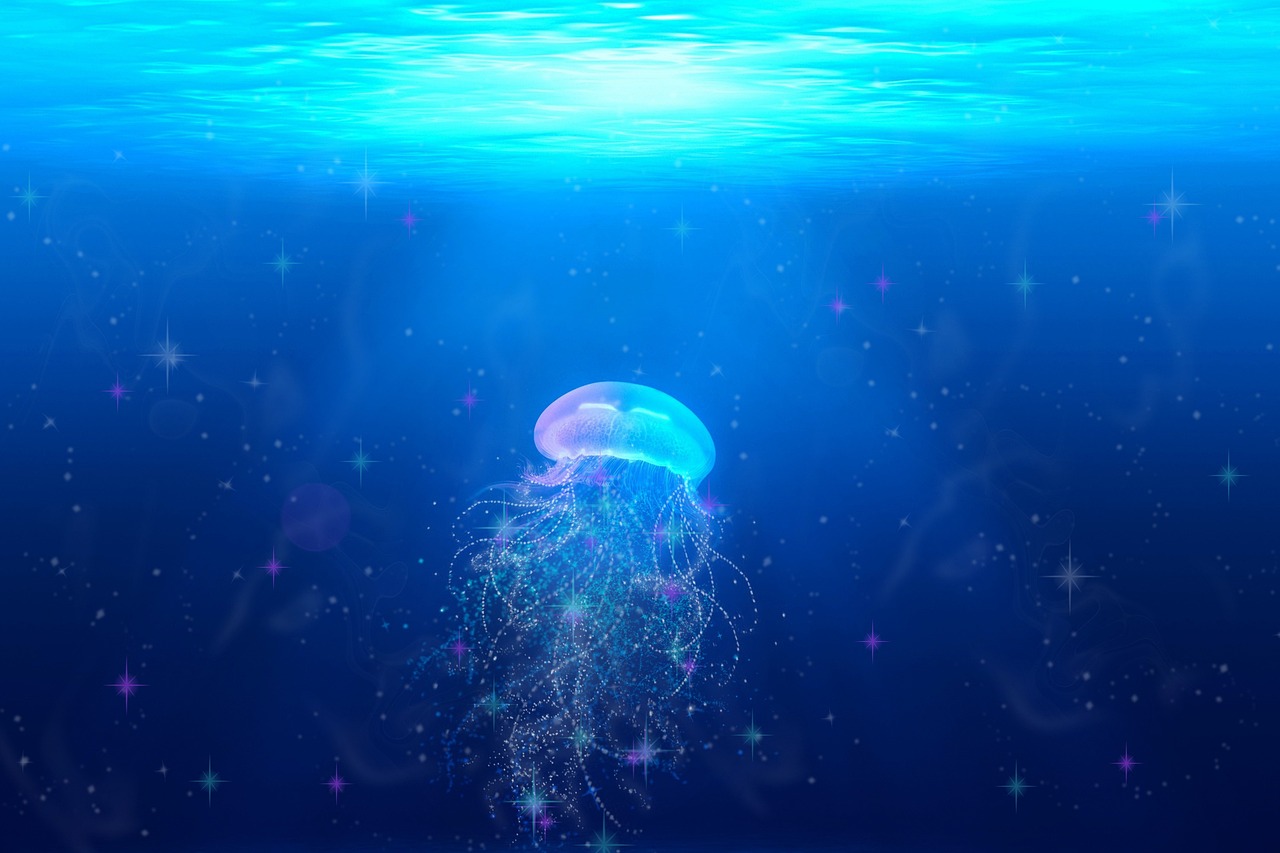
The secret of immortality has been floating in the ocean all this time, in the form of a jellyfish, while we sifted heaven and science to the ends of the earth for the art of defeating death. Turritopsis dohrnii, also known as the immortal jellyfish, survives death at some point in their lives. Imagine the butterfly turning back into a moth. Or a chicken turning into an egg again. Otherwise, an old man will age and become a fetus again. Although none of these things are happening, this jellyfish will revert to infancy when faced with death. Then will live once more. To know how it is, you need to know the life cycle of the jellyfish.
Turritopsis dohrnii, a member of the Hydrozoa family, prefers warm oceanic habitats. At the same time, they are also found in areas with cold water. They are believed to have originated in the Caribbean and Mediterranean seas. But in recent decades, they have spread to oceans around the world.
Maria Pia Miglietta, a professor of biology at the University of Notre Dame, describes this global spread of jellyfish as a ‘silent invasion’. They have come all over the world clinging to the bottoms of cargo ships. Due to their exceptional ability to survive, in the future there will be no situation in which only immortal jellyfish will exist in the oceans.
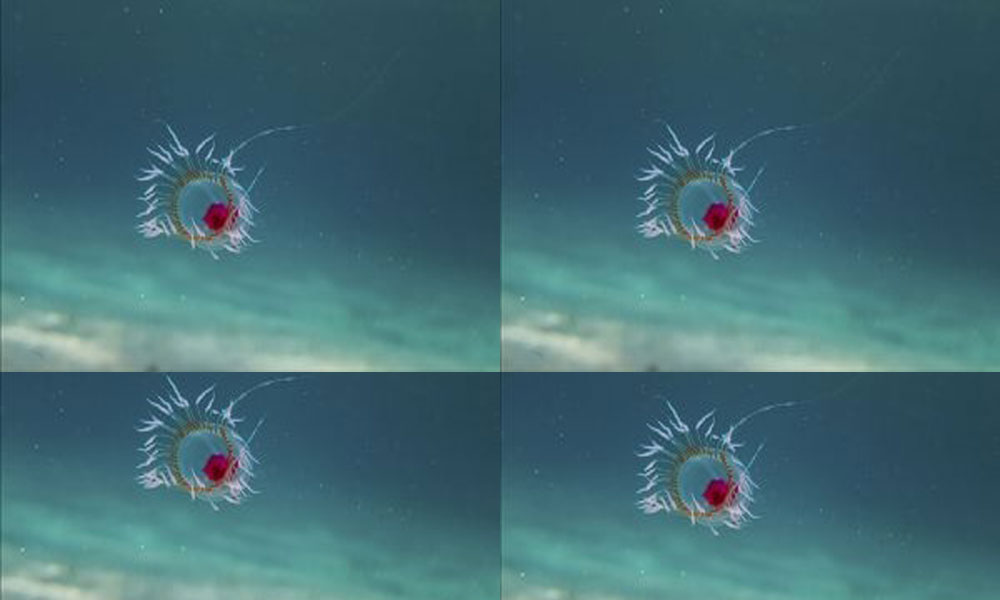
Their food is small insects in the sea and fish eggs. Turritopsis dohrnii is a very small creature, measuring only 4.5 mm in length and width. There are two stages in their life cycle. The hydroid stage, which grows and colonises through polyps, and the floating medusa stage. In general, everyone is more familiar with the jellyfish’s medusa stage form. A parachute-shaped figure with a balloon-like umbrella on top and fringes hanging down from it.
A jellyfish begins life as a larva called a planula. It is a very small cigar shaped one. They twist and float in the water to find a suitable place to cling to. If it sticks to one place, then the larva turns into a polyp. The polyp has the ability to clone itself. Thus, a colony of polyps is formed by self-replication. They can colonise the entire bottom of a canoe in days. If the conditions are right, the polyps will bloom and the baby jellyfish will emerge. This is where the medusa stage of the jellyfish life cycle begins.
Normally, the medusa of Hydrozoa species produces eggs and spores after they are fully grown. Fertilized ovules become planula. The planula again sticks somewhere and forms a hydroid colony. Polyps form from it and they produce more medusae. This is the typical life cycle of a jellyfish. After reproduction, the medusa will die.
Defeating death
The beginning of a jellyfish’s life is quite ordinary, but the end is quite extraordinary. When the medusa of the immortal jellyfish dies, it sinks to the ocean floor and begins to decompose. But then the miracle happens. From that the cells will be regenerated and thus they will come back to life. Not as new medusa or larvae. As polyps. New jellyfish will hatch from those polyps. This time, jellyfish skip the larval stage and start life as polyps.
Let the miracle of rebirth be there. What is the benefit of this to the jellyfish and why does it do this, these questions are more relevant here. Immortal jellyfish bring out this unique survival strategy and rebirth when faced with danger due to old age, illness, lack of food, or otherwise. Once this process begins, the umbels and fringes on the top of the jellyfish begin to die. It reverts to the polyp state and clings to any surface and comes back to life as a new jellyfish. Jellyfish can repeat this over and over again.
In 1988, Christian Sommer, a German student of marine biology, discovered this immortality of jellyfish completely by accident
How long can this jellyfish live? The answer is how long. These jellyfish were probably still in the oceans when the dinosaurs went extinct 66 million years ago. Biologically, a single immortal jellyfish can live for a long time without dying. Technically they can. But it has not been proved. Because the study of these jellyfish started after 1980s. So, we only have decades of knowledge about them. Moreover, if eaten by other creatures such as fishes, sea turtles, and other jellyfish, their lives will certainly end there.
Who discovered it?
In 1988, Christian Sommer, a German student of marine biology, discovered this immortality of jellyfish completely by accident. Sommer and another student, Giorgio Bavestrello, collected some hydrozoa, which they thought were turritopsis nutricula. Sommer kept the medusa in the lab and watched them until they emerged. Later he forgot about it. But a few days later, Sommer examined the jar in which they were stored and noticed something unusual. These jellyfish exhibit some unusual behaviours. Sommer couldn’t even imagine why that might be. In fact, it seemed to Sommer that they refused to die. A rare phenomenon that occurs backwards in life. They are getting younger and have reached their infancy. There it begins a new life cycle.
But even after a quarter of a century since Christian Sommer made that great discovery, we still haven’t been able to find the secret of the immortal jellyfish’s reincarnation
At the time, Sommer did not realize the significance or magnitude of his discovery. It was only after a century that the name immortal Jellyfish was given to this species. Sommer’s discovery was taken up by biologists. They learned more about this species. Several experimental observations were made. And, in 1996, they published their study under the name ‘Reversing the Life Cycle’. In the study, they explained how this category of jellyfish reverts to the initial polyp stage at some point in their growth. Thus, they escape death and attain immortality, a research paper on the topic says. The discovery challenged the world view that once born there is death.
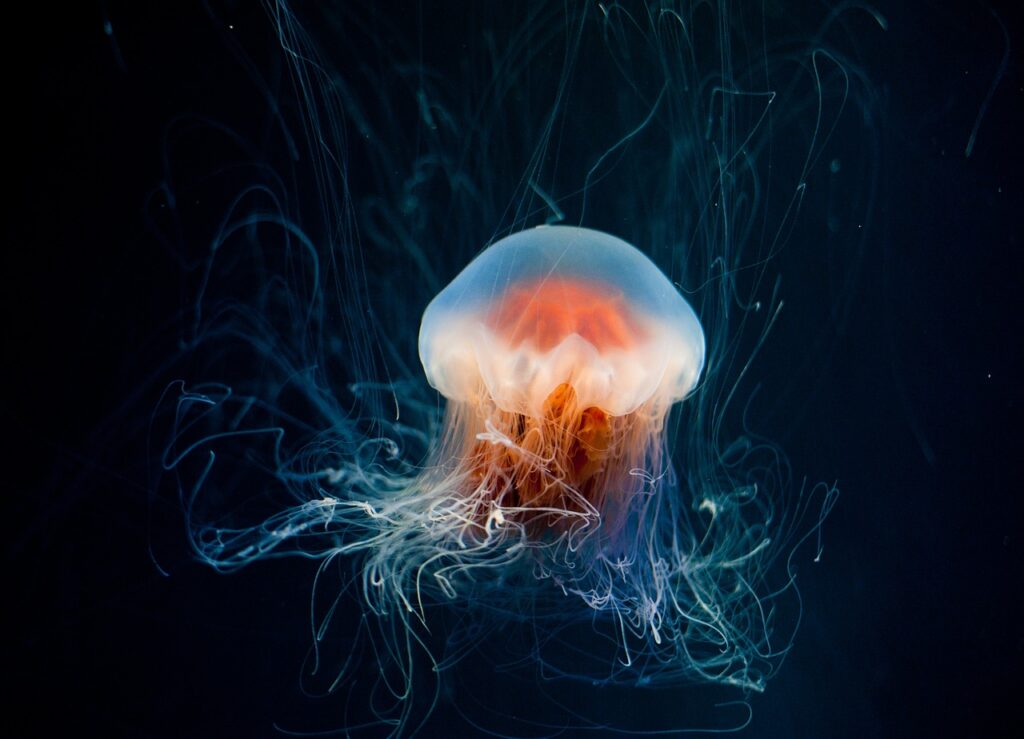
Can that secret make man immortal?
To overcome death, start living again from the beginning. If the life secret of immortal Jellyfish, which has made the concepts of immortality and rebirth almost a reality, can’t human beings one day put dust in the eyes of death? Should be. Damaged cells in the body can be repaired and regenerated. It can be very crucial in treating and curing deadly diseases like cancer. But even after a quarter of a century since Christian Sommer made that great discovery, we still haven’t been able to find the secret of the immortal jellyfish’s reincarnation.
Immortal jellyfish and some other members of this genus put life into reverse gear when faced with environmental stressors or physical shocks. During this time, a process called cellular transdifferentiation takes place in the organism. It is an unusual phenomenon in which one type of cell changes into another (for example, a skin cell becomes a nerve cell). When this happens, cells produced by cell division change in shape, characteristics, and functions, and they become like sperm cells. In jellyfish, all cells of the medusa stage become cells of the polyp stage. Then the body structure itself changes completely. As seen in the movies. This process is called ontogeny reversal and inverted metamorphosis. An abnormal deviation in the normal life cycle. Each cell contains the information needed to build an organism as a whole. But only a part of this information is used by the jellyfish for ‘rebirth’. Understanding the molecular mechanism in jellyfish that causes ontogeny reversal, instructing all cells to return to infancy, could be the first step towards the ever-greater human goal of ‘immortality’.
The Sciences
Most Earthquake Energy Is Spent Heating Up Rocks, Not Shaking the Ground: New MIT Study Finds
How do earthquakes spend their energy? MIT’s latest research shows heat—not ground motion—is the main outcome of a quake, reshaping how scientists understand seismic risks

When an earthquake strikes, we experience its violent shaking on the surface. But new research from MIT shows that most of a quake’s energy actually goes into something entirely different — heat.
Using miniature “lab quakes” designed to mimic real seismic slips deep underground, geologists at MIT have, for the first time, mapped the full energy budget of an earthquake. Their study reveals that only about 10 percent of a quake’s energy translates into ground shaking, while less than 1 percent goes into fracturing rock. The vast majority — nearly 80 percent — is released as heat at the fault, sometimes creating sudden spikes hot enough to melt surrounding rock.
“These results show that what happens deep underground is far more dynamic than what we feel on the surface,” said Daniel Ortega-Arroyo, a graduate researcher in MIT’s Department of Earth, Atmospheric and Planetary Sciences, in a media statement. “A rock’s deformation history — essentially its memory of past seismic shifts — dictates how much energy ends up in shaking, breaking, or heating. That history plays a big role in determining how destructive a quake can be.”
The team’s findings, published in AGU Advances, suggest that understanding a fault zone’s “thermal footprint” might be just as important as recording surface tremors. Laboratory-created earthquakes, though simplified models of natural ones, provide a rare window into processes that are otherwise impossible to observe deep within Earth’s crust.
MIT researchers created the “microshakes” by applying immense pressures to samples of granite mixed with magnetic particles that acted as ultra-sensitive heat gauges. By stacking the results of countless tiny quakes, they tracked exactly how the energy distributed among shaking, fracturing, and heating. Some events saw fault zones heat up to over 1,200 degrees Celsius in mere microseconds, momentarily liquefying parts of the rock before cooling again.
“We could never reproduce the full complexity of Earth, so we simplify,” explained co-author Matěj Peč, MIT associate professor of geophysics. “By isolating the physics in the lab, we can begin to understand the mechanisms that govern real earthquakes — and apply this knowledge to better models and risk assessments.”
The work also provides a fresh perspective on why some regions remain vulnerable long after previous seismic activity. Past quakes, by altering the structure and material properties of rocks, may influence how future ones unfold. If researchers can estimate how much heat was generated in past quakes, they might be able to assess how much stress still lingers underground — a factor that could refine earthquake forecasting.
The study was conducted by Ortega-Arroyo and Peč, along with colleagues from MIT, Harvard University, and Utrecht University.
The Sciences
Giant Human Antibody Found to Act Like a Brace Against Bacterial Toxins
This synergistic bracing action gives IgM a unique advantage in neutralizing bacterial toxins that are exposed to mechanical forces inside the body
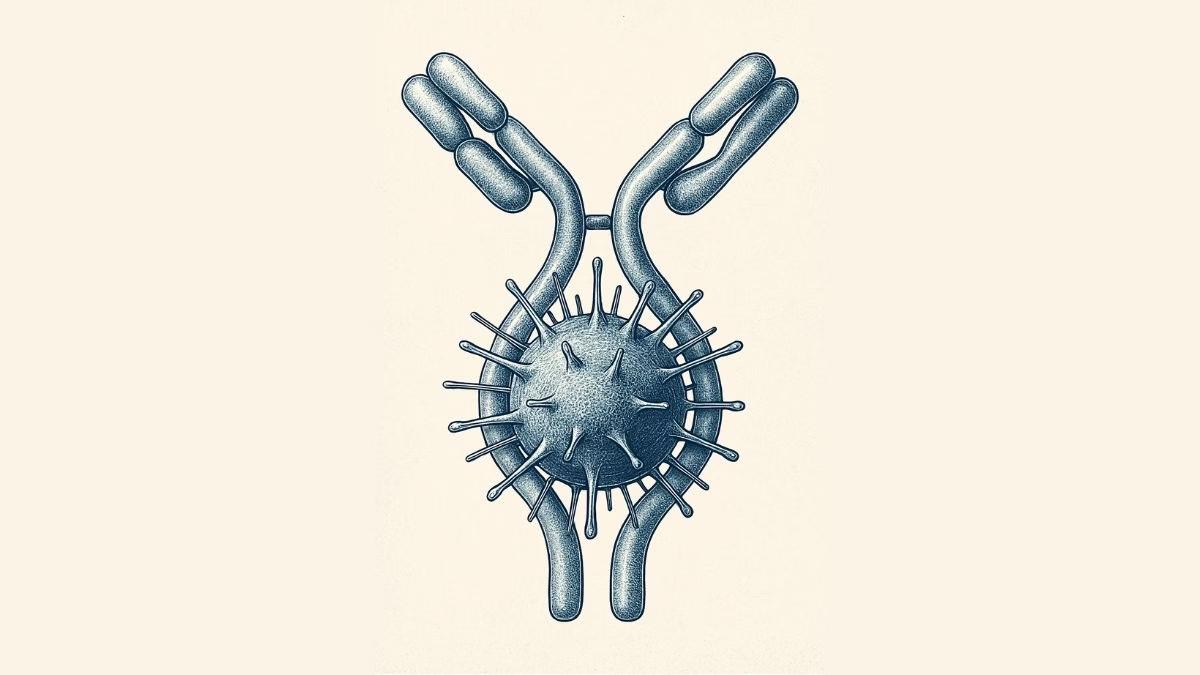
Our immune system’s largest antibody, IgM, has revealed a hidden superpower — it doesn’t just latch onto harmful microbes, it can also act like a brace, mechanically stabilizing bacterial toxins and stopping them from wreaking havoc inside our bodies.
A team of scientists from the S.N. Bose National Centre for Basic Sciences (SNBNCBS) in Kolkata, India, an autonomous institute under the Department of Science and Technology (DST), made this discovery in a recent study. The team reports that IgM can mechanically stiffen bacterial proteins, preventing them from unfolding or losing shape under physical stress.
“This changes the way we think about antibodies,” the researchers said in a media statement. “Traditionally, antibodies are seen as chemical keys that unlock and disable pathogens. But we show they can also serve as mechanical engineers, altering the physical properties of proteins to protect human cells.”
Unlocking a new antibody role
Our immune system produces many different antibodies, each with a distinct function. IgM, the largest and one of the very first antibodies generated when our body detects an infection, has long been recognized for its front-line defense role. But until now, little was known about its ability to physically stabilize dangerous bacterial proteins.
The SNBNCBS study focused on Protein L, a molecule produced by Finegoldia magna. This bacterium is generally harmless but can become pathogenic in certain situations. Protein L acts as a “superantigen,” binding to parts of antibodies in unusual ways and interfering with immune responses.
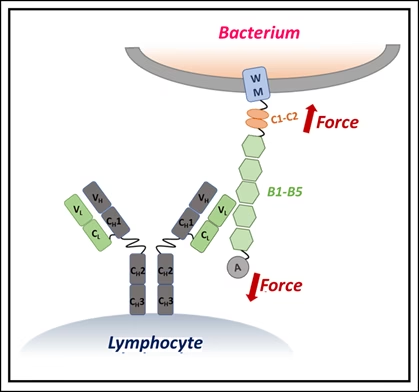
Using single-molecule force spectroscopy — a high-precision method that applies minuscule forces to individual molecules — the researchers discovered that when IgM binds Protein L, the bacterial protein becomes more resistant to mechanical stress. In effect, IgM braces the molecule, preventing it from unfolding under physiological forces, such as those exerted by blood flow or immune cell pressure.
Why size matters
The stabilizing effect depended on IgM concentration: more IgM meant stronger resistance. Simulations showed that this is because IgM’s large structure carries multiple binding sites, allowing it to clamp onto Protein L at several locations simultaneously. Smaller antibodies lack this kind of stabilizing network.
“This synergistic bracing action gives IgM a unique advantage in neutralizing bacterial toxins that are exposed to mechanical forces inside the body,” the researchers explained.
The finding highlights an overlooked dimension of how our immune system works — antibodies don’t merely bind chemically but can also act as mechanical modulators, physically disarming toxins.
Such insights could open a new frontier in drug development, where future therapies may involve engineering antibodies to stiffen harmful proteins, effectively locking them in a harmless state.
The study suggests that by harnessing this natural bracing mechanism, scientists may be able to design innovative treatments that go beyond traditional antibody functions.
The Sciences
Researchers Unveil Breakthrough in Efficient Machine Learning with Symmetric Data

MIT researchers have developed the first mathematically proven method for training machine learning models that can efficiently interpret symmetric data—an advance that could significantly enhance the accuracy and speed of AI systems in fields ranging from drug discovery to climate analysis.
In traditional drug discovery, for example, a human looking at a rotated image of a molecule can easily recognize it as the same compound. However, standard machine learning models may misclassify the rotated image as a completely new molecule, highlighting a blind spot in current AI approaches. This shortcoming stems from the concept of symmetry, where an object’s fundamental properties remain unchanged even when it undergoes transformations like rotation.
“If a drug discovery model doesn’t understand symmetry, it could make inaccurate predictions about molecular properties,” the researchers explained. While some empirical techniques have shown promise, there was previously no provably efficient way to train models that rigorously account for symmetry—until now.
“These symmetries are important because they are some sort of information that nature is telling us about the data, and we should take it into account in our machine-learning models. We’ve now shown that it is possible to do machine-learning with symmetric data in an efficient way,” said Behrooz Tahmasebi, MIT graduate student and co-lead author of the new study, in a media statement.
The research, recently presented at the International Conference on Machine Learning, is co-authored by fellow MIT graduate student Ashkan Soleymani (co-lead author), Stefanie Jegelka (associate professor of EECS, IDSS member, and CSAIL member), and Patrick Jaillet (Dugald C. Jackson Professor of Electrical Engineering and Computer Science and principal investigator at LIDS).
Rethinking how AI sees the world
Symmetric data appears across numerous scientific disciplines. For instance, a model capable of recognizing an object irrespective of its position in an image demonstrates such symmetry. Without built-in mechanisms to process these patterns, machine learning models can make more mistakes and require massive datasets for training. Conversely, models that leverage symmetry can work faster and with fewer data points.
“Graph neural networks are fast and efficient, and they take care of symmetry quite well, but nobody really knows what these models are learning or why they work. Understanding GNNs is a main motivation of our work, so we started with a theoretical evaluation of what happens when data are symmetric,” Tahmasebi noted.
The MIT researchers explored the trade-off between how much data a model needs and the computational effort required. Their resulting algorithm brings symmetry to the fore, allowing models to learn from fewer examples without spending excessive computing resources.
Blending algebra and geometry
The team combined strategies from both algebra and geometry, reformulating the problem so the machine learning model could efficiently process the inherent symmetries in the data. This innovative blend results in an optimization problem that is computationally tractable and requires fewer training samples.
“Most of the theory and applications were focusing on either algebra or geometry. Here we just combined them,” explained Tahmasebi.
By demonstrating that symmetry-aware training can be both accurate and efficient, the breakthrough paves the way for the next generation of neural network architectures, which promise to be more precise and less resource-intensive than conventional models.
“Once we know that better, we can design more interpretable, more robust, and more efficient neural network architectures,” added Soleymani.
This foundational advance is expected to influence future research in diverse applications, including materials science, astronomy, and climate modeling, wherever symmetry in data is a key feature.
-

 Space & Physics6 months ago
Space & Physics6 months agoIs Time Travel Possible? Exploring the Science Behind the Concept
-

 Know The Scientist6 months ago
Know The Scientist6 months agoNarlikar – the rare Indian scientist who penned short stories
-

 Know The Scientist5 months ago
Know The Scientist5 months agoRemembering S.N. Bose, the underrated maestro in quantum physics
-

 Space & Physics3 months ago
Space & Physics3 months agoJoint NASA-ISRO radar satellite is the most powerful built to date
-

 Society5 months ago
Society5 months agoAxiom-4 will see an Indian astronaut depart for outer space after 41 years
-

 Society5 months ago
Society5 months agoShukla is now India’s first astronaut in decades to visit outer space
-

 Society5 months ago
Society5 months agoWhy the Arts Matter As Much As Science or Math
-

 Earth5 months ago
Earth5 months agoWorld Environment Day 2025: “Beating plastic pollution”
























